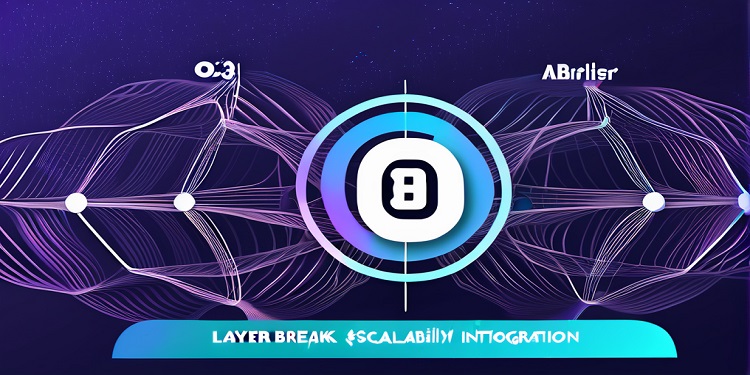The blockchain landscape continues to evolve as scalability becomes a critical challenge, particularly with the rising popularity of decentralized applications (dApps). Ethereum, which pioneered smart contract functionality, has experienced significant congestion on its network, resulting in high transaction fees that deter users. To address these issues, developers have turned to Layer 2 (L2) protocols, such as Arbitrum, to improve transaction efficiency and reduce costs. Now, with O3 Layer’s integration into Arbitrum Orbit, the blockchain world is witnessing a major step forward in scalability through Layer 3 (L3) solutions.
The Need for Layer 2 and Layer 3 Solutions
Ethereum revolutionized the blockchain industry by enabling smart contracts and dApps, but as usage increased, so did the strain on its network. The congestion caused by high transaction volume led to elevated gas fees, which made even basic transactions expensive and reduced user engagement. To alleviate these pressures, Layer 2 solutions like Arbitrum emerged. L2 protocols focus on conducting transactions off-chain and only settling them on Ethereum’s Layer 1 for security purposes, significantly reducing costs and increasing throughput.
However, as the decentralized finance (DeFi) ecosystem expanded, further scalability became necessary, driving the development of even more advanced solutions. Enter Layer 3, a new layer designed to enhance the efficiency and customization of blockchain networks beyond the capabilities of L2.
Arbitrum Orbit: Driving Modular Blockchain Development
Arbitrum, already a leading Ethereum scaling solution, introduced Arbitrum Orbit, a permissionless platform that enables developers to create customizable L2 and L3 blockchains. Orbit allows for the creation of tailored chains that can operate seamlessly within the Ethereum ecosystem, offering flexibility without sacrificing security. L2 chains settle on Ethereum (Layer 1), while L3 solutions can settle on any Ethereum L2 network, ensuring the decentralized security benefits of Ethereum remain intact.
O3 Layer, the first-ever modular Layer 3 protocol built on Bitcoin, is revolutionizing blockchain scalability and efficiency. By leveraging the groundbreaking @Arbitrum Orbit, we deliver a high-performance, modular blockchain with unparalleled speed and reduced costs.
Discover… pic.twitter.com/UlQOiqB6w1
— O3 Layer (@O3Layer_) October 7, 2024
Arbitrum Orbit is designed for businesses and projects requiring customized blockchain infrastructure. Its permissionless structure enables developers to build freely without the need for approval from centralized authorities, fostering innovation and further decentralization.
O3 Layer: The First Modular Layer 3 Protocol
O3 Layer has distinguished itself as the first modular Layer 3 protocol built on Arbitrum Orbit. This groundbreaking move positions O3 Layer as a leader in blockchain scalability by offering a fully customizable execution layer that operates efficiently with both Layer 2 (Arbitrum) and Layer 1 (Ethereum). O3 Layer leverages Arbitrum Orbit’s technology stack to enhance throughput, reduce transaction costs, and enable seamless interactions between multiple blockchain layers.
The Advantages of Arbitrum Orbit for O3 Layer
By integrating with Arbitrum Orbit, O3 Layer unlocks a host of benefits that allow it to set new standards in decentralized network performance:
Increased Transaction Capacity: O3 Layer’s operations on Layer 3 handle a higher volume of transactions in parallel, reducing congestion and latency when compared to networks that solely rely on Layer 1 or Layer 2. This makes dApps on O3 more responsive and capable of serving a broader user base.
Reduced Gas Fees: Operating on Layer 3 helps minimize transaction fees, making the network more affordable for a wider audience. Lower fees are crucial for projects looking to reach large user bases and provide more accessible services.
Seamless Cross-Layer Interaction: O3 Layer can interact with both L2 smart contracts on Arbitrum and assets on Ethereum’s Layer 1, allowing for the development of more complex applications that span multiple blockchain layers.
Bridging Assets and Data: O3 Layer includes built-in bridges that facilitate the transfer of tokens and information between L3 and other layers. This interoperability strengthens the network’s utility and ease of use.
Faster Transaction Finality: With its enhanced throughput, O3 Layer offers faster transaction confirmations, making the network more responsive and improving the user experience across applications.
Pioneering the Future of Scalable Blockchain Networks
O3 Layer’s integration with Arbitrum Orbit represents a major milestone in blockchain scalability. By embracing the modular architecture offered by Orbit, O3 Layer showcases how innovative technologies can drive the next phase of decentralized applications. The ability to process transactions at higher speeds, lower costs, and with greater flexibility sets a new benchmark for blockchain networks.
As the demand for scalable and customizable blockchain solutions grows, the blockchain industry is likely to see a surge in Layer 3 protocols built on modular architectures like Arbitrum Orbit. This development not only enhances the performance of existing decentralized networks but also opens the door to new use cases, propelling blockchain technology into its next era of innovation.









